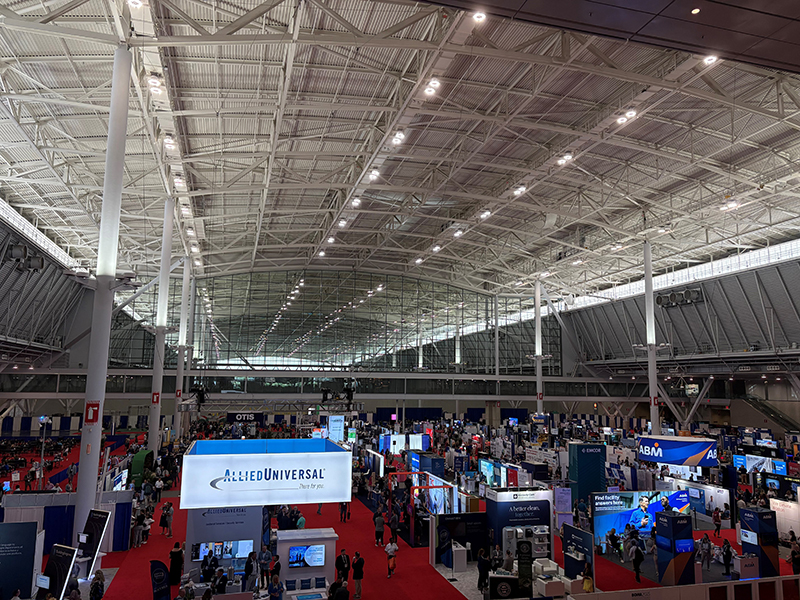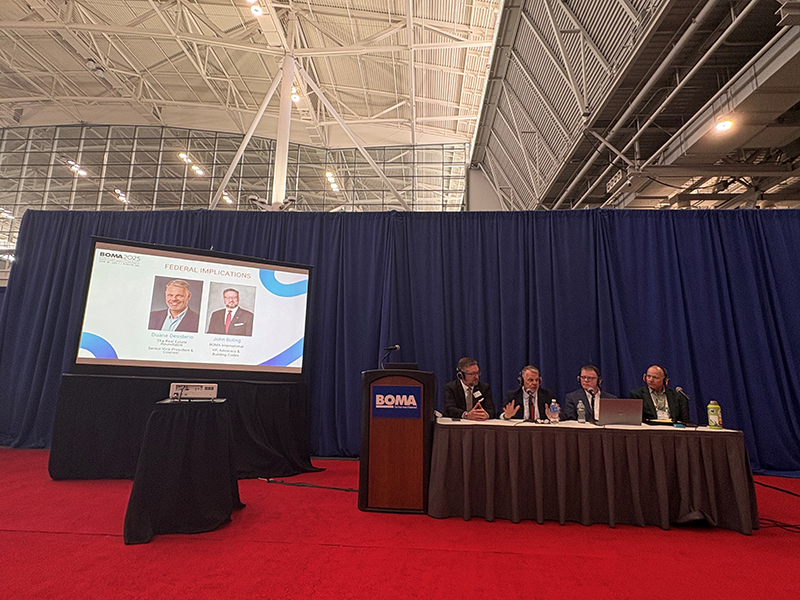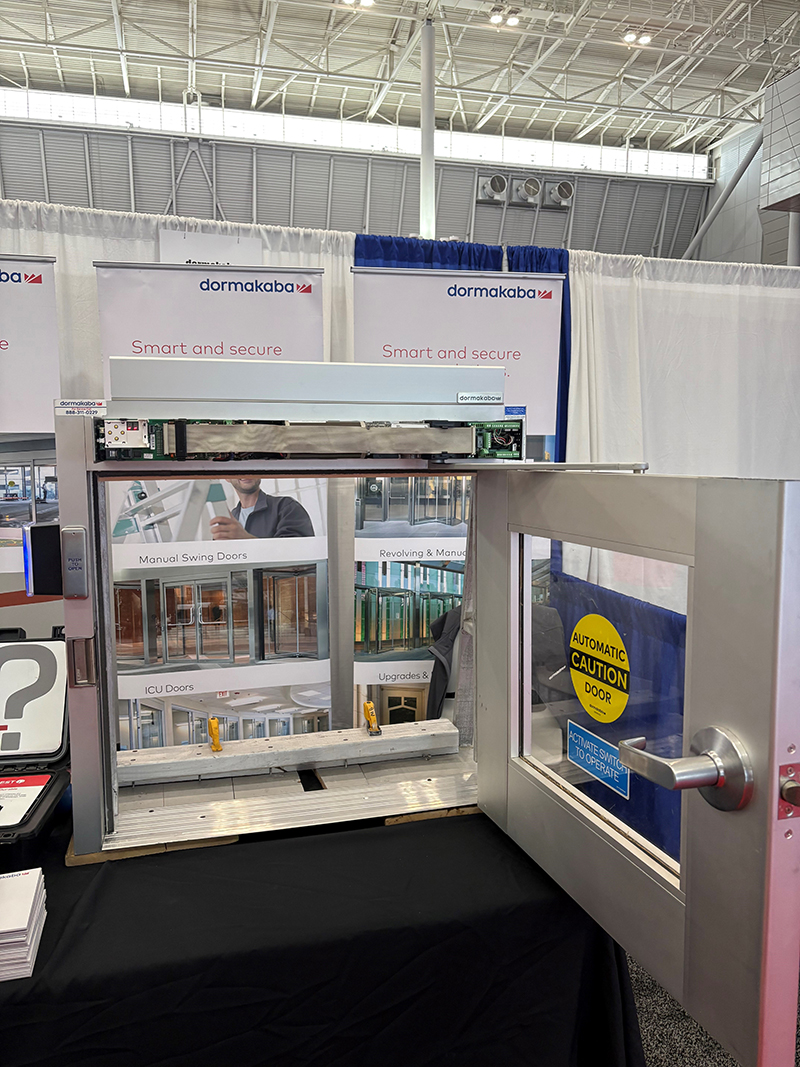
The Building Owners and Managers Association (BOMA) international conference and expo was held in Boston, Massachusetts, from June 28-July 1. The event featured educational sessions such as "The Future of Building Energy Performance Standards: Navigating Regulatory Changes and Market Trends" and "The End of Energy Star?" as well as tabletop displays from a range of companies spanning the building envelope industry.

The End of Energy Star?
A standout session of the BOMA conference and expo was "The End of Energy Star? Implications for Commercial Real Estate" which included commentary and insight from BOMA Vice President of Advocacy and Building Codes John Boling, Senior Vice President and Counsel for the Real Estate Roundtable Duane Desiderio, Director of Sustainability at NV5 David Ray and Director of Operations at JLL Wayne Talbot.
In May, the Trump administration announced its plans to dissolve the Environmental Protection Agency’s Office of Atmospheric Protection which would eliminate Energy Star. For about three decades, Energy Star has certified the energy efficiency of buildings and home appliances.
Boling and Desiderio have been travelling to Washington D.C. to meet with decision-makers and educated them on the importance of this program, including putting out a letter to authorizers and appropriators.
"No decisions have been made just yet. Energy Star is referenced three dozen times in the U.S. code, so this is an entrenched program. It cant just be changed willy-nilly," says Desiderio. "There is a statutory process to change the 2025 law. What we're aiming for is to get indications into budget for fiscal year 26 (Oct. 1, 2025) that Energy Star will continue as a viable program."
The future of Energy Star looking ahead may mean the Department of Energy assumes some resonsibilities or making Energy Star a fee-based program in order to pay for it. Right now Energy Star is completely free as it's paid for by tax payers. Desiderio says that while Energy Star costs tax payers $32 million per year, it translates to about $40 billion in energy savings.
Talbot uses Energy Star's Portfolio Manager for the building he owns and manages. He says this tool helps him pinpoint any wasted energy, like a system running that doesn't need to be or something not running correctly. He says this tool is simple to use and the only one out there that is free.
"[Portfolio Manager] is like a building BMI; a health check. If your doctor suggests you should lose weight, that’s fact-based advise. Similarly, Energy Star tells you how healthy your building is," says Talbot.
Ray educated the audience on how to save all of your data in Energy Star to your computer so you don't lose all of that information if the program does go away. He also went over some other, alternative programs, although none of free to use.
Boling and Desiderio reiterated that they are educating those on the Hill that Energy Star is a business program that inevitably saves the public money, while also reducing carbon emissions. They will continue to advocate for the program.
Building Energy Performance Standards
Another session at BOMA was "The Future of Building Energy Performance Standards: Navigating Regulatory Changes and Market Trends," held by Stuart Feilden, Eshaan Mathew and Arthur Woolverton, all of Siemens. The landscape of BEPS is evolving with new regulations, technologies and market expectations.
Currently, 16 U.S. cities have BEPS in place, with over 40 cities slated to have standards in place by 2026. The panel says that complying with these targets will allow you to compete and attract and retain new tenants. Market trends are driving the need for action. Stakeholder demands and investor expectations are driving organizations to make sustainability a strategic imperative. Expansions of sustainability in building management include scope 3 emission reduction targets and health and wellbeing outcomes.
Many companies continue to set goals of net zero carbon emissions, but don set up the plan on how to get there. Total energy management is required to reach those goals. This includes:
- Cost reduction and funding: Building and HVAC upgrades, water conservation
- Energy flexibility and resilience: Asset monetization
- Electrification: Heat and vehicle electrification
- Procurement: Outcome-based decisions, implementation
- Advisory services: Facility Condition Assessments

According to the panel, there are three major groups of challenges when it comes to implementing BEPS: Scarcity of green initaitves, the ability to unlock the data of the building due to disparate systems, and siloed organization/different groups within an organization with different needs trying to come together to make a decision. Recommendations from the panel include:
- Programmatic, continuous approach to the life cycle of the facility
- Adopt some type of unified data strategy
- Learn about alternative financial vehicles
Tabletops
Aside from the educational sessions, companies also showed up at BOMA to showcase new and existing products and services. Among top needs for customers include accessibility, safety and security and sustainability.
dormakaba had on display its automated swing door that comes in two different styles for both heavyweight and lightweight doors. This door includes safety sensors and activation by motion. This product is five years old now but continues to be one of the company's most popular products due to its accessibility features, according to a company rep. Tremco was showing attendees its sealants that can be extruded at any width and in any color. A company rep says that these sealants appeal to customers due to their cost-effectiveness. "Why buy a new roof if we can help restore it?" he says.
Assa Abloy was also at BOMA displaying its intelligent keying systems. A company rep says that more glass and less rails is a major ask from customers, as well as accessibility.

